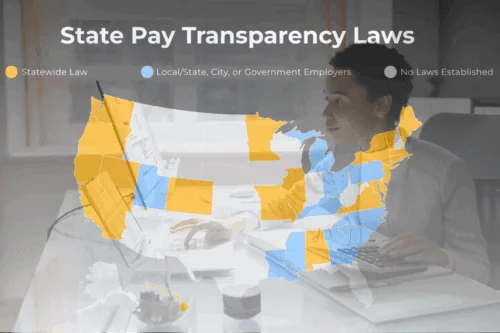Welcome to our comprehensive guide on affirmative action plans, a crucial avenue for promoting equality in the workplace. Understanding these plans is vital for entering the job market or considering a career move. Affirmative action plans help ensure that every individual has a fair chance at employment regardless of background. These programs are not just about compliance; they are about building workplaces that reflect the diversity of the society in which we live.
This guide will walk you through the essentials of affirmative action plans, from their history and legal basis to real-life success stories and strategies for effective implementation. Whether you’re an employer, an HR professional, or a job seeker, you’ll find valuable insights into harnessing affirmative action’s potential for advancing career and business objectives. So, let’s understand how these plans work and their significance in today’s diverse workforce landscape.
Understanding the Affirmative Action Plan
Affirmative action plans are designed to manage and promote workplace diversity by preventing discrimination against certain groups. These plans are often associated with efforts to equalize educational and employment opportunities. Let’s delve deeper into what these plans generally entail.
Definition and Purpose
The main goal of an affirmative action plan is to provide equal opportunities for everyone. These plans work actively to include groups that have been historically marginalized or underrepresented, whether due to race, gender diversity, or other factors. This approach supports fairness and enriches the workplace environment with diverse perspectives.
Key Strategies
Affirmative action employs several strategies to ensure a balanced and just workplace:
- Recruitment Efforts: Tailored strategy to reach diverse applicant pools.
- Training Programs: Initiatives aimed to enhance skills across diverse groups.
- Monitoring and Evaluation: Regular assessments are conducted to ensure compliance with and effectiveness of the affirmative action plan.
Moreover, these plans are not only about fairness; they also bring considerable value to an organization. A diverse workforce encourages creativity and innovation, often leading to better decision-making and increased profitability.
Legal Framework
In the United States, affirmative action’s legal foundation can be traced back to the American Civil Rights Act, which outlines prohibitions against employment discrimination. Specific guidelines and obligations can also be found through the Office of Federal Contract Compliance Programs (OFCCP), which ensures that employers doing business with the federal government comply with the legal requirements to promote equality.
Implementing an affirmative action plan is crucial for creating an inclusive culture. It bridges gaps in equality that have long existed in the workforce landscape. Learn more about how inclusive hiring practices can transform industries and promote environments where everyone has the chance to succeed.
History and Development of Affirmative Action Plans
Origins in Civil Rights Movements
The concept of affirmative action took root during the American civil rights movement in the 1960s. It was an era marked by widespread calls for equality, where actions aimed to eliminate systemic discrimination in institutions. President Kennedy first used the term in 1961, linking it to federal contracts and laying the groundwork for equality in hiring practices.
Legislative Milestones
The development of affirmative action plans has been shaped significantly by several critical pieces of legislation:
- The Civil Rights Act of 1964: This landmark legislation outlawed discrimination based on race, color, religion, sex, or national origin, reinforcing the basis for affirmative action.
- The Equal Employment Opportunity Act: This 1972 act empowered the Equal Employment Opportunity Commission to enforce laws against workplace discrimination vigorously.
The Role of Education and Employment
Affirmative action quickly expanded beyond employment to address inequalities in educational opportunities. Notable Supreme Court cases such as Regents of the University of California v. Bakke set precedents that although quotas were unconstitutional, institutions could consider race, among other factors, in admissions processes.
Throughout its history, affirmative action has sparked debate. Yet, it has been crucial in fostering diversity and inclusion within the workforce and educational systems. For further insights, explore the terminology associated with Latino culture that enriches understanding in diverse environments.
Critical Components of an Effective Affirmative Action Plan
Clear Objectives
First, an effective affirmative action plan (AAP) defines clear goals. These targets address particular areas where diversity needs improvement, setting measurable objectives.
Comprehensive Data Analysis
Additionally, data analysis is fundamental. Companies must analyze workforce composition and compare it with the relevant labor market. This assessment helps identify underrepresentation.
Inclusive Recruitment Strategies
Moreover, recruitment is crucial. Employers should widen their hiring channels to reach diverse talent pools. Partnering with diverse schools and organizations is effective.
Employee Development
Also, the development of current employees matters. Training programs to foster skills and leadership potential among underrepresented groups are essential.
Regular Review and Adjustments
Finally, regular review ensures the plan stays relevant and practical. Adjustments should be made based on ongoing results and evolving organizational goals.
These components create a proactive frame for organizations to follow, leading to more diverse and inclusive workplaces. For a deeper dive into diversity in the workforce, explore how varying perspectives can enhance organizational outcomes.
Importance of Affirmative Action in Promoting Diversity
Enhancing Workplace Culture
An affirmative action plan (AAP) significantly improves workplace culture. It helps create an environment where all employees feel valued and respected. AAPs foster a sense of belonging and cooperation among diverse employee groups.
Boosting Innovation and Creativity
Moreover, diversity through affirmative action breeds innovation. Diverse teams bring a variety of viewpoints, leading to more creative solutions and breakthroughs in projects.
Improving Market Understanding
In addition, having a diverse workforce can better align a company with its market. Understandably, teams that reflect a company’s customer base are better equipped to understand customer needs and nuances.
Attracting Top Talent
Companies strongly dedicated to diversity attract top talent, and prospective employees often seek out inclusive employers committed to fair practices.
Legal Compliance
Furthermore, effective AAPs ensure legal compliance, helping companies avoid potential lawsuits and penalties related to discriminatory practices.
Ultimately, the benefits of executing affirmative action plans are vast. They enhance the internal culture and position the company better in the global market. For further exploration of cultural engagement, see how team building enriches corporate environments.
Challenges and Controversies Surrounding Affirmative Action
Misperceptions of Unfair Advantage
One major challenge of affirmative action plans (AAPs) arises from misconceptions—some view AAPs as giving unfair advantages rather than leveling the playing field.
Legal Challenges and Litigation
Further, affirmative action frequently faces legal scrutiny. High-profile legal cases, like those heard by the Supreme Court, often challenge the legality of AAPs, arguing against racial considerations in policies.
Difficulty in Implementation
Implementing AAPs can also be complex. Organizations struggle to balance diversity goals with finding highly qualified candidates in a competitive market.
Resistance Within Organizations
Additionally, internal resistance can occur. Employees and stakeholders might resist changes that AAPs bring, especially if they don’t understand the benefits.
Despite these challenges, it’s crucial to continue advocating for affirmative action to foster diversity and inclusion—the broader community benefits when all members are given equitable opportunities.
Affirmative Action Plan Success Stories
Innovative Diversity Initiatives
Many companies have achieved remarkable results by implementing affirmative action plans (AAPs). These successes often involve strategic diversity initiatives leading to a more inclusive and productive workplace.
Case Study: Technology Sector
In the technology sector, firms have leveraged AAPs to broaden their talent pool. This approach has enhanced innovation and opened up new markets, reflecting diverse consumer needs globally.
Higher Education Achievements
Universities have also seen success with affirmative action in admissions policies. These policies enhance campus diversity, enriching the educational experience for all students. Programs that support underrepresented students contribute to higher graduation rates and more significant success post-graduation.
Government and Public Sector
In the public sector, affirmative action policies have improved representation significantly across different levels of government. This change has led to more equitable service delivery and policies that better serve a diverse population.
These success stories showcase the tangible benefits of affirmative action in various fields. By committing to equal opportunity, organizations fulfill a moral obligation and enjoy a competitive advantage. For related information, see how attitudes toward bilingualism in the US impact organizational policies.
Legal Aspects and Compliance of Affirmative Action Plans
Key Legal Requirements
Affirmative action plans (AAPs) must comply with federal and state laws. The OFCCP mandates that certain employers develop AAPs to ensure equal employment opportunities.
Monitoring and Reporting
Companies must regularly monitor and report their employment practices. This process involves detailed record-keeping and analysis of hiring, promotion, and compensation metrics among different demographic groups.
Adhering to Supreme Court Decisions
Several Supreme Court rulings have shaped affirmative action policies. Understanding these decisions helps organizations implement AAPs that respect both the letter and the spirit of the law.
Best Practices for Compliance
Organizations can follow best practices to stay compliant:
- Engage legal experts to review AAPs regularly.
- Conduct training sessions to educate managers and HR personnel about nondiscrimination policies.
- Establish clear channels for grievances and reports of discrimination.
Preparing Your Business for an Affirmative Action Plan
Assessing Current Policies
Firstly, assess your existing policies. Identify areas lacking in diversity and inclusion. This step is crucial for setting clear objectives.
Building a Diverse Leadership Team
Moreover, it involves diverse leaders in the planning process. They bring valuable insights that can make your affirmative action plan more effective.
Engaging with Employees
Additionally, communicate the plan’s importance and benefits to all employees. Open dialogues can foster understanding and support.
Setting Measurable Goals
Set clear, achievable goals. For instance, aim to increase the representation of underrepresented groups by specific percentages within a timeline.
Continuous Education and Training
Also, provide ongoing education and training on diversity and inclusion. This step helps to sustain commitment and adapt to evolving needs.
By preparing thoughtfully, your business can implement a successful affirmative action plan. This preparation will meet compliance goals and enhance overall business performance.
FAQ’s
What is an affirmative action plan?
An affirmative action plan (AAP) is intended to improve workplace diversity and prevent discrimination. It involves setting specific goals towards these ends.
Who needs an affirmative action plan?
Businesses with federal contracts often require AAPs. Additionally, any organization committed to diversity and inclusion can benefit from implementing such a plan.
Is affirmative action the same as diversity and inclusion?
Not exactly. While affirmative action is a policy approach focusing on specific groups, diversity and inclusion are broader, aiming to create a welcoming environment for everyone.
How is the effectiveness of an AAP measured?
The effectiveness is measured by monitoring progress towards the set objectives, such as recruitment, retention, and advancement of underrepresented groups.
Can small businesses implement affirmative action plans?
Yes, small businesses can and do benefit from affirmative action plans. They enhance team diversity and can significantly improve business outcomes.
What are the legal risks of not having an AAP?
Without an AAP, businesses may inadvertently become non-compliant with equal employment laws, potentially facing legal actions and damaging public relations.
Conclusion
Implementing an affirmative action plan is more than a legal necessity; it’s a strategic advantage that promotes diversity, boosts innovation, and improves market understanding. Although challenges exist, the benefits of adopting such plans are significant and far-reaching across various sectors. Employers create equitable opportunities and enrich their organization’s cultural dynamics and competitive edge in the marketplace.
Join Diversity Employment
Enhance your organization’s commitment to diversity and inclusion. Join Diversity Employment and post a job or two today! You’ll gain access to resources, insights, and a vibrant resume database looking for diversity and inclusion positions. Implement your affirmative action plan to thrive in today’s diverse world. Together, we can create workspaces where everyone has an opportunity to succeed!




